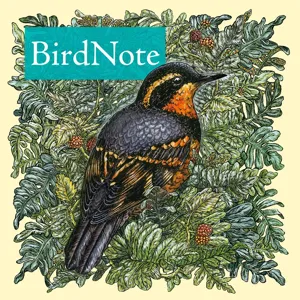Sandgrouse: Desert Water-carriers

Sandgrouse live in some of the most parched environments on earth. To satisfy the thirst of their chicks, male sandgrouse carry water back to the nest in a surprising but effective way: by carrying it in their feathers. Thanks to coiled hairlike extensions on the feathers of the underparts, a sandgrouse such as this Burchell's Sandgrouse can soak up and transport about two tablespoons of liquid. The sandgrouse chicks use their bills like tiny squeegees, “milking” their father’s belly feathers for the water they need.
More info and transcript at BirdNote.org.
Want more BirdNote? Subscribe to our weekly newsletter. Sign up for BirdNote+ to get ad-free listening and other perks.
BirdNote is a nonprofit. Your tax-deductible gift makes these shows possible.